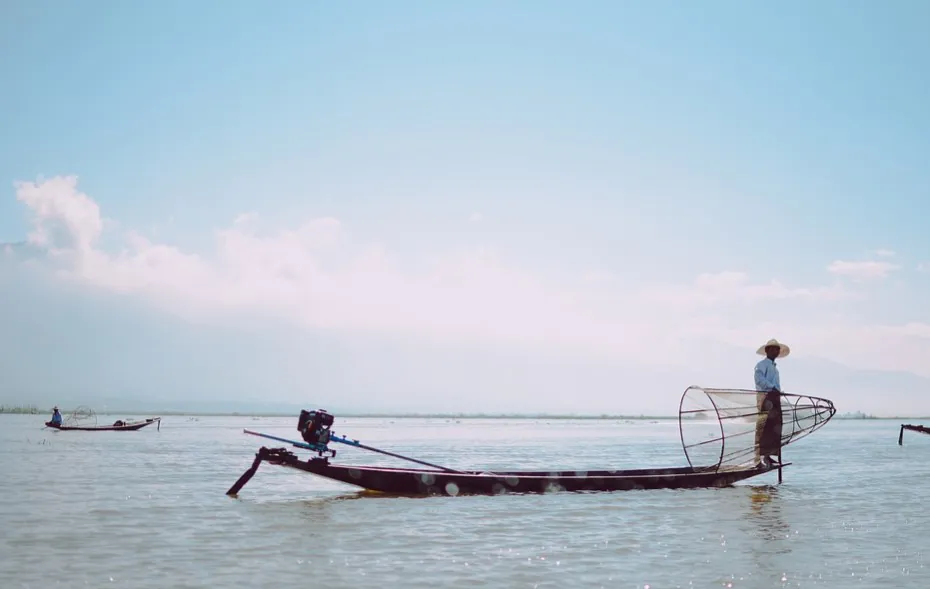The global aquaculture industry is booming, driven by some of the world’s largest seafood producing countries, largest seafood exporters and importers. Today, the global aquaculture consists of variety of seafood farming, including fish, aquatic plants, algae, crustaceans, molluscs, and other organisms. The rising awareness about the nutrition content of aquaculture products around the world is of the key factors fuelling the market’s growth over the recent years. Scientific research shows that the consumption of aquaculture products that are rich in nutrients prevent as well as alleviate a plethora of diseases while playing a key role in brain development and reproduction. Such advantage is expected to thrive the demand for aquaculture products such as shrimps and salmon, as a result, driving the global aquaculture market growth and also increase the aquaculture market revenue.
Bizvibe’s smart B2B marketplace solutions help buyers and suppliers in the global aquaculture and fish farming industry to find and connect with each other, shorten sourcing and purchasing cycles, and maximise profit growth. Join today to see how BizVibe can help your business grow!
Global Aquaculture Industry Overview
According to the recent market report from Techanvio, the world’s total aquaculture seafood production reached over 86 million tons in 2019, while the global aquaculture industry was valued at USD 180.2 billion in the same year, and figure is anticipated to reach USD 224.2 billion by 2022. UN’s Food an Agriculture Organization also reports that the contribution of aquaculture to the global production of capture fisheries and aquaculture combined has risen continuously, reaching 46.8 percent in 2016, up from 25.7 percent in 2000. With 5.8 percent annual growth rate during the period 2001–2016, aquaculture continues to grow faster than other major food production sectors
The aquaculture industry around the world makes essential contributions to the employment, especially in the developing countries. According to the FAO, aquaculture provides employment to more than over 41 million people globally. The vast majority of aquaculture activities are carried out in developing countries working in fish and fisheries production. As most capture fisheries worldwide considered fully exploited or overexploited, aquaculture industry has become an important sector to cater the global seafood demand, which will continue to increase with population growth, rising incomes and increasing urbanization.
At present, the global aquaculture market is dominated by China, which accounts for nearly three-fourths of the market in terms of both volume and value, according to the report. China’s CAGR from 2017-2022 is predicted to be 3.99 percent. The second-largest market share for aquaculture products is India, followed by Indonesia, Chile, Norway, Japan, South Korea, the United States, and the United Kingdom. Of those countries, Indonesia will see the highest CAGR through 2022 at 17.24 percent; South Korea will experience the second-highest growth rate at 14.77 percent; and the remaining countries will see compound annual growth rates of between four and nine percent, the report predicted. The aquaculture sector in the United States is estimated to have a CAGR of 4.10 percent.
Largest Aquaculture Seafood Producing Countries
|
Rank |
Country |
2018 Aquaculture Seafood Production (Million Metric Tons) |
|
1 |
China |
63.70 |
|
2 |
Indonesia |
16.60 |
|
3 |
India |
5.70 |
|
4 |
Vietnam |
3.60 |
|
5 |
Bangladesh |
2.20 |
|
6 |
Philippines |
2.20 |
|
7 |
South Korea |
1.90 |
|
8 |
Egypt |
1.40 |
|
9 |
Norway |
1.30 |
|
10 |
Japan |
1.10 |
Source: FAO
China continued to be the world’s largest seafood producing countries in 2019, with production estimated at 64.5 million metric tons (MMT) as a decline in wild catch was offset by growing aquaculture production. The decline in wild catch is expected to continue to challenge overall seafood production growth in 2019. In 2018, seafood imports increased, driven by China’s large seafood processing capacity aimed at value-added seafood product exports. Domestic demand for aquaculture products is expected to have a stronger growth in the near future.
Indonesia is currently the world’s second largest aquaculture seafood producer, about 28% of Indonesia’s aquatic animal farming was integrated with rice-fish farming. India is also one of the world’s top aquaculture seafood producing countries. Research suggests that India still has a huge potential of increasing its fish and fisheries production if the countries takes full advantages of its vast aquaculture land.
Largest Aquaculture and Seafood Exporters in the World
|
Rank |
Country |
2018 Seafood Exports Value (billion US$) |
|
1 |
EU |
38.1 |
|
2 |
China |
25 |
|
3 |
Norway |
12.1 |
|
4 |
Vietnam |
7.7 |
|
5 |
India |
7 |
|
6 |
Chile |
6.8 |
|
7 |
US |
6.1 |
|
8 |
Thailand |
6 |
|
9 |
Canada |
5.4 |
|
10 |
Ecuador |
5 |
Source: Statista
Fish and fish products are also some of the most traded food items in the world today. According to the FAO, over 60 million tonnes (live weight equivalent) of total fish and fish products exported every year. Over the past 40 years, the rate of growth of exports from developing countries has been significantly faster than that of exports from developed countries.
In 2018, The European Union was the top exporter of fish and fishery products worldwide, at 38.1 billion U.S. dollars in export value. China came in second at 25 billion U.S. dollars in fish and fishery exports. China has become one of the world’s largest seafood exporters since early 2000s, followed by Norway, Vietnam and the India.
Largest Aquaculture and Seafood Importers in the World
| Rank | Country | 2018 Seafood Imports Value (billion US$) |
| 1 | EU | 60.6 |
| 2 | US | 22.6 |
| 3 | China | 20.2 |
| 4 | Japan | 15.3 |
| 5 | South Korea | 6 |
| 6 | Thailand | 3.9 |
| 7 | Canada | 3 |
| 8 | Russia | 2.2 |
| 9 | Australia | 1.6 |
| 10 | Brazil | 1.4 |
Source: Statista
EU ranks the largest seafood importer in 2018, followed by the US and China. With the rapid growth in its domestic seafood demand, China’s seafood import value is witnessing a strong increase. Today, China is a world’s major salmon importer, with 70,000 tonnes of salmonids consumed yearly, mostly imported from Chile, Denmark and Norway. To reduce import dependence and prices, Chinese farmers are attempting to raise salmon and other temperate fish like trout.
Future Trends in the Global Aquaculture Industry
Some of the key factors that will shape the trends in the industry’s promising future include improvements in aquaculture systems, sustainable practices, and diversification of species for world’s largest seafood producing countries. With the growing health and environmental concerns, vendors in the aquaculture industry are focusing on introducing organic aquaculture. The proliferation of organic aquaculture is concentrated predominantly in economies including Indonesia and China. For instance, Indonesia has over 1,300 hectares of organically managed area. Consequently, companies in the aquaculture business are also undertaking polyculture practices in farming methods of organic aquaculture. It is forecast that the increased preference for organic aquaculture will be one of the major trends that will gain traction in the aquaculture market during the next few years.
Join BizVibe and connect with thousands of world’s leading aquaculture and seafood suppliers and buyers today!



